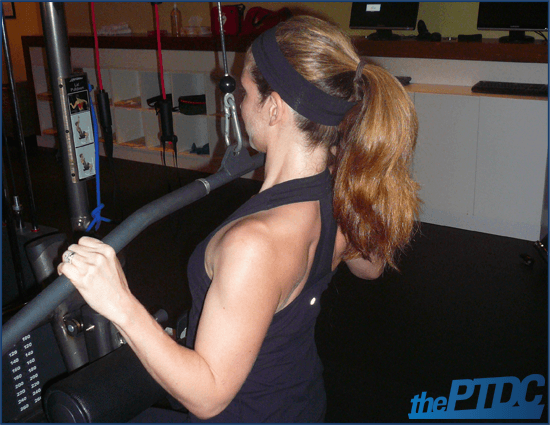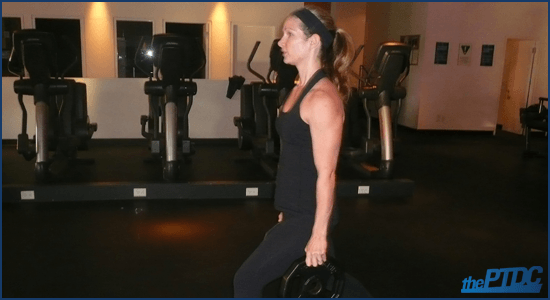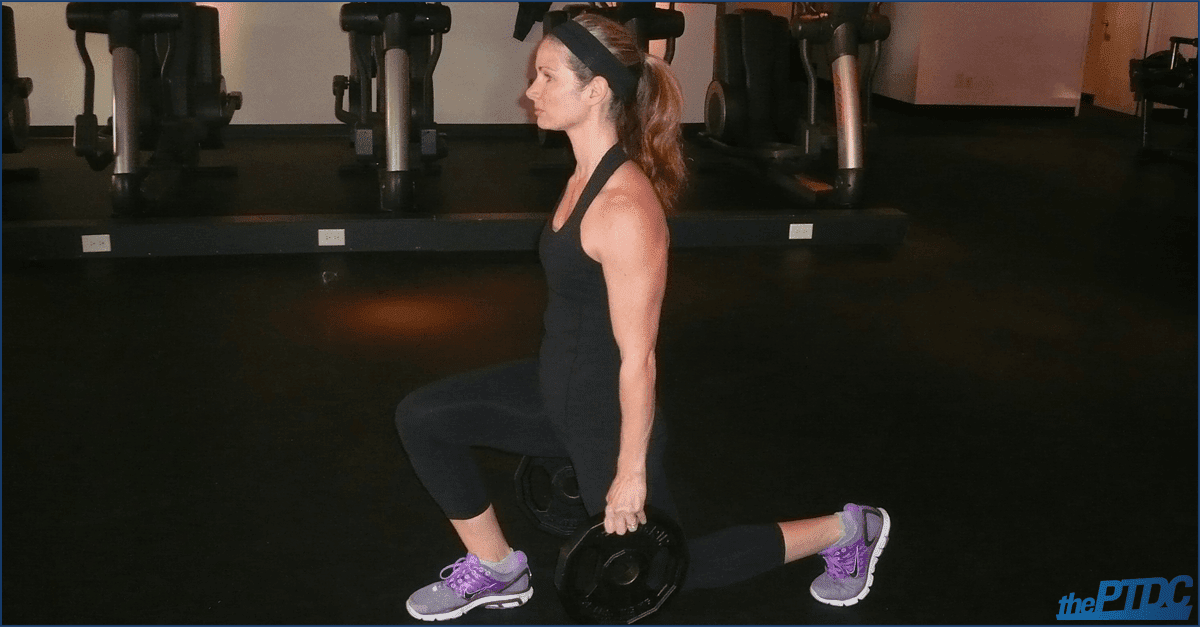I'll never be pregnant.
I don't pretend to understand the complexity of emotions that occurs after a female gives birth. While times are rightly changing, the majority of personal trainers are still male, and the majority of clients are still female. That's why I, as a male, decided to write this article.
It's important for all coaches to understand how to speak to and train a new mom. Any trainer in the industry for more than a couple years will have a client who gives birth. From a business standpoint, showing an expertise in postpartum workout instruction will make you indispensable.
The first and most important point is that postnatal bodies are beautiful and powerful. They're not flawed or broken.
"I can't remember the last time I talked to a postnatal client about getting her body back, because that's irrelevant," says Jessie Mundell, our go-to training expert for prenatal and postpartum clients. "This body is new; it's different; it's incredible; and it has grown life. What is more womanly than that?"
And yet, a lot of trainers indulge clients who say things like "I need to get my abs back" or "I want to fit into my pre-baby jeans."
Your main job is to help your client heal, recover, and get back to being strong in the gym while feeling sexy outside of it.
Consider where she's coming from:
Whether it's her first pregnancy or not, she's just undergone a transformational experience. She has a new life, and a new body. It's likely that she's carrying more unwelcome extra weight and has stretched skin across her abdomen.
At a time of her life highlighted with puke and changing diapers, a new Mom often puts herself last. You're the one who's going to put her first.

You're the one who is going to put her first.
The minute that a new Mom walks in the door, tell her that she looks fantastic. Do this every time you see her, even if she's sleep deprived, hasn't showered for days, is covered in baby puke, and couldn't find anything to wear because nothing fits anymore.
Look for ways to make her life easier outside of the workout. On her first day back in the gym ask her how she takes her coffee and have one ready for her when she comes into the gym every workout. Also have a towel ready and a bottle of water.
You'll want to encourage your client to adopt a mindset of self-love and compassion. Show empathy and learn to listen without feeling like you need to give advice. If she comes in and needs to vent, that's fine. Go into an office and close the door behind you.
Be a great listener and when she's done talking, simply thank her for sharing, give her a high five, smile, and ask if she's ready to leave this in the office and get on with the workout. Leave the office and close the door behind you. You're not a therapist. Don't feel like you need to offer sage wisdom. Learn to listen.
Finally, instill confidence by having an open dialogue about what's going on and recognizing signals when they appear. For example, if a new Mom says or does any of the following 5 things while training it could be a sign of a bigger problem:
1) "It feels like there's a weird heaviness in pelvis."
2) "I have to pee all the time, but barely anything comes out." Or, "I feel like I always have to pee, even if I've just gone to the bathroom."
3) Always uses the bathroom before workout and uses the bathroom during the workout.
4) New client (no matter how long postpartum) tells you she can't or doesn't like any exercises that involve jumping, running, etc.
5) "My body definitely hasn't felt the same since having my kids, and that was almost 20 years ago."
All the above statements could be a hint that there's core and floor dysfunction. Take it seriously as it generally requires more work on retraining the core and floor to work synergistically or could be a sign of something more serious like pelvic organ prolapse (when the abdominal and/or pelvic organs begin to fall down and out of place, with their eventual descent out of the vagina or anus).

Pinch grip. A nice way to vary the lunge and add in some grip training.
Take charge of the situation
Instill confidence by showing you're not afraid to speak about what might be going on. That means you need to lean into potentially awkward conversations. When you start the conversation, most of the time they'll open up to you about what they're experiencing. You should say the real names of body parts openly and don't use slang.
Here are a couple examples of conversations, courtesy of Jessie Mundell.
Conversation #1: The bladder
Trainer: "Does that exercise feel okay?"
Client: "Yeah ... I think so."
Trainer: "Do you feel pressure on your bladder, or anywhere else in the pelvis?"
Client: "To be honest, it feels a little bit I might leak when I step down."
Trainer: "Okay, that's really good to know. I wouldn't call it a normal sensation, but it's really common. We need to back off on that exercise for a bit while we work on the core and pelvic floor muscles. You know, a lot of my postpartum clients work with a pelvic floor physiotherapist. If you're interested, I can give you the name of someone I recommend."
Conversation #2: The stomach, part 1
Client: "I feel like I can't hold my stomach in during that exercise."
Trainer: "Thanks for letting me know. Let's get you out of that position and into this one. Tell me if it feels the same, or if you can feel the abdominals working and your belly feeling more supported."
Conversation #3: The energy level
Trainer: "How are you feeling today?"
Client: "I'm feeling okay. We had a rough night, though. Baby was up every hour, and then my oldest was a terror this morning trying to get ready for school. So I'm feeling pretty drained."
Trainer: "Wow. That sounds really tough. Good for you for even getting here today. Today let's see what we can do to help you feel better and get your energy up."
Conversation #4: The stomach, part 2
Client: "I really want to do more ab work. I don't think we're doing enough, and I really want to lose this belly."
Trainer: "I promise you we're doing more than enough. Every exercise we're doing is working the abdominals, just a bit differently than you might be used to. We need to heal the diastasis recti and pelvic floor first, so we don't cause any serious long-term issues. In our exercises, we're training your stomach to be flat, whereas in crunches or sit-ups we would be causing your stomach to bulge out. We just need to stick to the plan, be patient with the progress, and it'll all come together."
Postnatal fitness is a fantastic niche
Moms make for sensational clients. They're committed, they see the value in proper training, they're emotionally invested, and new moms know other new moms—and they talk. Do a great job, and you'll be a superstar with an endless flow of referrals.
Not only that, the population is underserved. A lot of moms have had bad experiences with personal trainers who make existing problems or create new ones, like constant low back pain.
From a business perspective, becoming adept and confident with postpartum clients is a great way to make selling personal training easy. Helping a new mom feel strong in the gym and sexy outside of it is valuable and rewarding, and often gives you a client her life.










